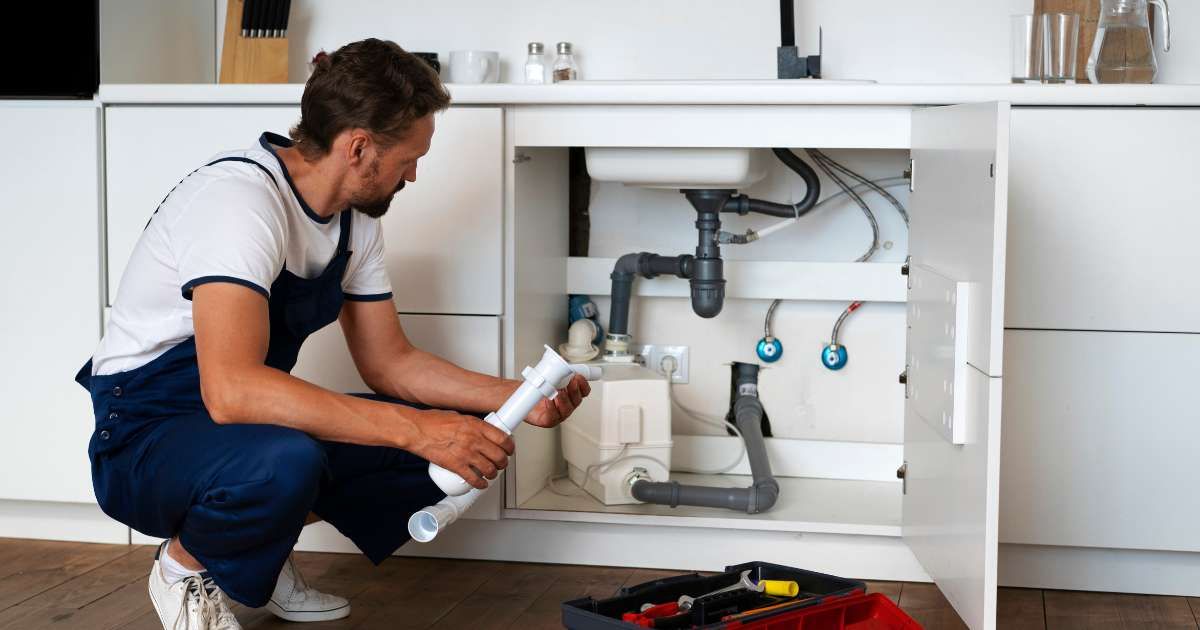
If you live in Kitchener, it is quite possible that you have bought a home or are thinking of buying a home that was built between 1995-2007. Homes built during this period may contain a hidden danger: Kitec plumbing, which poses a serious risk of significant water damage.
As a homeowner, it’s important to understand the effects Kitec plumbing may have on your house, and what you can do to stay on top of it.
Here, we explain how to identify if you have Kitec plumbing in your household and its associated risks, along with the necessary steps to protect your home from water damage, and costly repairs. Let’s be proactive and save your current or future home from becoming an expensive inconvenience in the future.
Advance Heading and Cooling is here to help. Do not hesitate to reach out to us for any of your HVAC or plumbing needs, including 24/7 repairs. Our experienced team is just a phone call or email away!
From 1995 to 2007, Kitec plumbing was installed in many homes in Kitchener and across Canada–the reason being that it was a cost-effective product that was easily installable compared to typical copper pipes.
Kitec pipes were manufactured by IPEX Inc. and were purposely made to be marketed as a simpler, and more affordable way to install plumbing.
Kitec plumbing incorporated many materials into their pipes, including metal, plastic, resin adhesives, and brass. The outer layers of the pipes are coloured bright orange for hot water lines and bright blue for cold water lines. Many homeowners and installers liked this approach as it made it easier to distinguish between the two. The materials used to structure the pipes provided a durable and flexible solution that made plumbing seem simpler at the time.
Unfortunately, Kitec plumbing's affordability came at a high price: premature failure and costly repairs. Copper piping, while more expensive upfront, proved to be a far wiser investment in the long run.
In the beginning, Kitec plumbing was well-received and seemingly made good on its promises. However, it didn’t take long for Kitec plumbing to start having issues. After a while, homeowners who used Kitec plumbing found that their pipes were corroding, leading to significant damage to their plumbing.
Due to the volume of these issues, Kitec decided to recall their products in 2005. As of now, homeowners who have never replaced their Kitec plumbing are at risk of costly water damage repairs.

Not sure how to identify Kitec plumbing in your current or future home? We have the answers to help you take preventative action.
One of the only beneficial aspects of Kitec piping is its noticeable colouring: bright orange for hot water and bright blue for cold water lines. Knowing when your home was built, or when piping was installed can also determine if you have Kitec plumbing. Once you’ve found these pipes, you will also see the label ASTM 1281, which proves its identity.
You may be wondering where to look for Kitec pipes in your house. Common places you can look for the tell-tale colours and labels are:
Near your water heater
Under your kitchen sink
In the bathroom
These are the most accessible areas to find out if you have Kitec plumbing.
Colour: Bright orange pipes for hot water and blue pipes for cold water.
Label: The ASTM 1281 is printed on the outside of the pipes.
Year: Kitec piping installations were present in Kitchener homes between 1995 and 2007.
Your water heater is a good starting point for a plumbing inspection. It's often the most accessible place to check what type of pipes are installed in your house. If you’re still unsure, the kitchen sink or bathroom are other places to examine.
If you think you may have Kitec plumbing in your house, and you’re still unsure, it may be best to consult a licensed plumber. Our professionals can accurately define Kitec pipes and help you take action to protect your home from future plumbing issues.
Even though Kitec plumbing was viewed as a less expensive and practical option when it was first introduced, it eventually came with its own set of challenges.
One of the main issues reported is that Kitec pipes and brass fittings are prone to corrosion. The brass fittings may have seemed like a durable option at the time, but their high levels of zinc reacted with the composition of the pipes and caused a build-up of zinc oxide. This buildup limited proper water flow and weakened the fittings.
Additionally, the pipes were prone to corroding on their own. Kitec used an aluminum layer in their piping, inadvertently causing water to react with other elements, leading to deterioration in a shorter amount of time. The combination of corrosion and the expansion and contraction of plastic and aluminum layers from temperature changes eventually caused the pipes to burst.
Recognizing the potential for extensive damage from plumbing failures is key to preventing these costly issues.
Burst pipes can lead to extreme water damage, and expensive repairs, which end up costing more than replacing your plumbing system entirely.
Water damage can affect the structure of your home, ruining walls, floors, carpets, furniture, and valuable possessions.
Chronic leaks can run up your water bill and harbour mold, which puts you and your family members at risk of serious health problems, especially those with breathing problems and allergies.
Given these negative consequences, it is important to address these plumbing issues head-on. Don't wait for Kitec plumbing to wreak havoc on your life. Replacing it now provides peace of mind and eliminates the worry of future damage, health risks, and costly repairs.
Without taking preventative measures, replacing Kitec plumbing can be quite costly. Depending on the size of your home, expenses can range from a few thousand dollars to tens of thousands. With this information, you have the power to save yourself a hefty bill.
Investing in new plumbing largely outweighs the potential costs of damage done to your home, and replacement costs combined. Water damage can lead to expensive household repairs, structural problems, ruined possessions, and the need for mold removal. Now that you are aware of the risks Kitec plumbing may cause, it is in your best interest to replace your plumbing sooner than later, to maintain the integrity of your home.
A class-action lawsuit resulting in a $125 million settlement against Kitec’s manufacturer, IPEX Inc. was a way for affected homeowners to receive compensation for the damages their homes endured. Unfortunately, as of now, the deadline to file a claim against IPEX has passed.
With insurance, however, homeowners who were affected by Kitec’s faulty plumbing may be able to cover the cost of a Kitec plumbing replacement to avoid future water damage expenses.
Contractors may also be held accountable. If your contractor failed to disclose that Kitec plumbing was recalled in 2007, then there may be an option to receive financial compensation. Review your insurance policy and discuss with a legal representative if these aspects apply to you.
If you suspect your home has Kitec plumbing, taking action as soon as possible is the best way to prevent future hassles. Here are the steps you should take:
Look for the bright orange and blue colouring, and the ASTM 1281 label to see if the year your plumbing was installed was between 1995 and 2007. Once you have confirmed, or you’re still wondering if you have Kitec plumbing, you can hire our licensed and certified plumbers to inspect your pipes.
Having a plumber evaluate the current condition of your pipes by determining signs of corrosion and wear will provide you with answers on the urgency of replacing your plumbing. Pipes and fittings that are in poor condition are warned with immediate action to prevent a potential burst.
Investing in proper plumbing can save you big bucks. Discussing with our plumbers about the costs of Kitec plumbing replacement based on your home's size is a necessary step to avoid added expenses associated with water damage and mold remediation.
In the event of a pipe burst or a leak, knowing how to shut off your household water main is a crucial action to minimize damage. To shut off your water supply, find the location of your main shut-off valve and turn the water off. Letting your family members know about this procedure can reduce risks, especially when you're not home.

Regularly checking your plumbing system allows you to stay on top of any minor issues. Minor leaks or long-term wear can affect plumbing fixtures, hoses, valves, and brackets. Stay on top of your plumbing to avoid irreversible damage.
By determining whether you have Kitec plumbing and facing the issues it presents head-on, you can proactively avoid a significant headache. Understanding the risks, replacing old plumbing, and regularly inspecting your plumbing are preventable ways to maintain the upkeep of your home. To learn more about your household’s plumbing, contact Advance Heating and Cooling for our expertise in reliable plumbing services.
